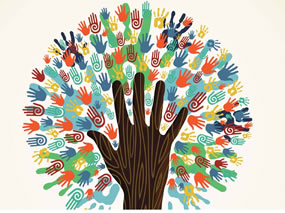Simple Self-Care for Therapists: Restorative Practices To Weave Through Your Workday
The primary concern of Simple Self-Care for Therapists is to break down Bush book for website effective methods to combat burnout and work-related stresses specific to practicing psychotherapists. In addressing this, Bush outlines myriad common scenarios coupled with personal anecdotes to illustrate what the scenarios might look like.
Spirit Into Form: Exploring Embryological Potential and Prenatal Psychology
The book is imbued with the serious belief that the human mind and soul is not an accidental side product of genes, brain, and body, but a dimension in the human where he/she strives to fulfill his/her talents and aptitudes, including the possible healing of traumatic experiences in earlier stages. Spirit as well as body as necessary but not sufficient condition for being and becoming human
Relational Psychoanalysis and Psychotherapy Integration
Relational Psychoanalysis and Psychotherapy Integration details how psychoanalysis can be integrated with other forms of non-analytical psychotherapeutic techniques.
Essential Psychopathology & Its Treatment
Essential Psychopathology & Its Treatment, 4th edition, includes updated research and data in the realm of psychopathology, etiology, and neuroscience. It covers the basics as well as the more complex details associated with disorders, psychopharmacology, and treatment.
Commentary on Babette Rothschild’s New Book and Chart
I am a big fan of Rothschild. Her earlier book (2000) elevated awareness of the autonomic nervous system (ANS), the substrate of all health, in the psychotherapy world, and taught us to look for and precisely recognize ANS signals in order to appropriately support recovery from trauma. Her new book adds excellent additional detail, including a “six-categories-of-ANS” poster that can now be viewed on the wall of our classroom at CSES. The bulk of the book is about therapy insights, which I found to be excellent; my concerns were just in a few pages of her Chapter Two.
The problem for me starts with Rothschild’s description of Polyvagal Theory (PVT), which occupies two pages in the chapter. She summarizes PVT as being the discovery of the “ventral vagus” function as distinct from the previously-known “dorsal vagus” function, which is the foundation of the parasympathetic branch of the autonomic nervous system. Both down-regulate the heart, but in different ways. She states that calm states arise from the ventral branch, and that collapse states arise from the dorsal branch. This is not all wrong, but for a person of Rothschild’s immense professional stature, I was really hoping for more.
A review of the Handbook of Body Psychotherapy & Somatic Psychology
There’s always this sense of anticipation when I read a book by editors and authors I personally know. My belly churns; there's an involuntarily pause before I exhale and my heart adds a beat to its rhythmic song because a resonance exists that translates from colleague to text. I hear their voice while reading as if we are together, in person, having an amicable chat.
When I heard that Halko Weiss, Courtenay Young and Michael Soth were part of The Handbook of Body Psychotherapy and Somatic Psychology, when I heard that many colleagues had contributed chapters, I immediately had to read it and share my thoughts with SPT Magazine’s readers.
How to Think Like an Anthropologist
There is a hackneyed tale of two young fishes. As they are swimming in the sea, they encounter an old fish who asks them, “Morning, boys. How’s the water?” The two fishes pass him by without saying a word and then one of them looks over to the other one and goes, “What is water?”
In his new book, How to Think Like an Anthropologist?, Matthew Engelke takes on the daunting task of asking us about the water: our culture.
Ethical Dilemmas in Psychotherapy: Positive Approaches to Decision Making
The book represents a step toward more effective standards and practices and it might prove it to be, even for those professionals who feel they don’t need overt tools for self-diagnosis, an important entry in the contemporary discourse about psychotherapeutic practice.
The Body Keeps the Score
Bessel van der Kolk’s, The Body Keeps The Score: Brain, Mind, and Body in the Healing of Trauma, takes a detailed, well-researched, and multidisciplinary approach to discussing trauma and how it can be treated clinically.
Why Love Matters
Sue Gerhardt’s book aims to reconcile the growing disparity between public and professional knowledge of the new developments in cognitive and behavioral neuroscience, as well as social developmental, and personality psychology that pertain to early infant development and beyond.













